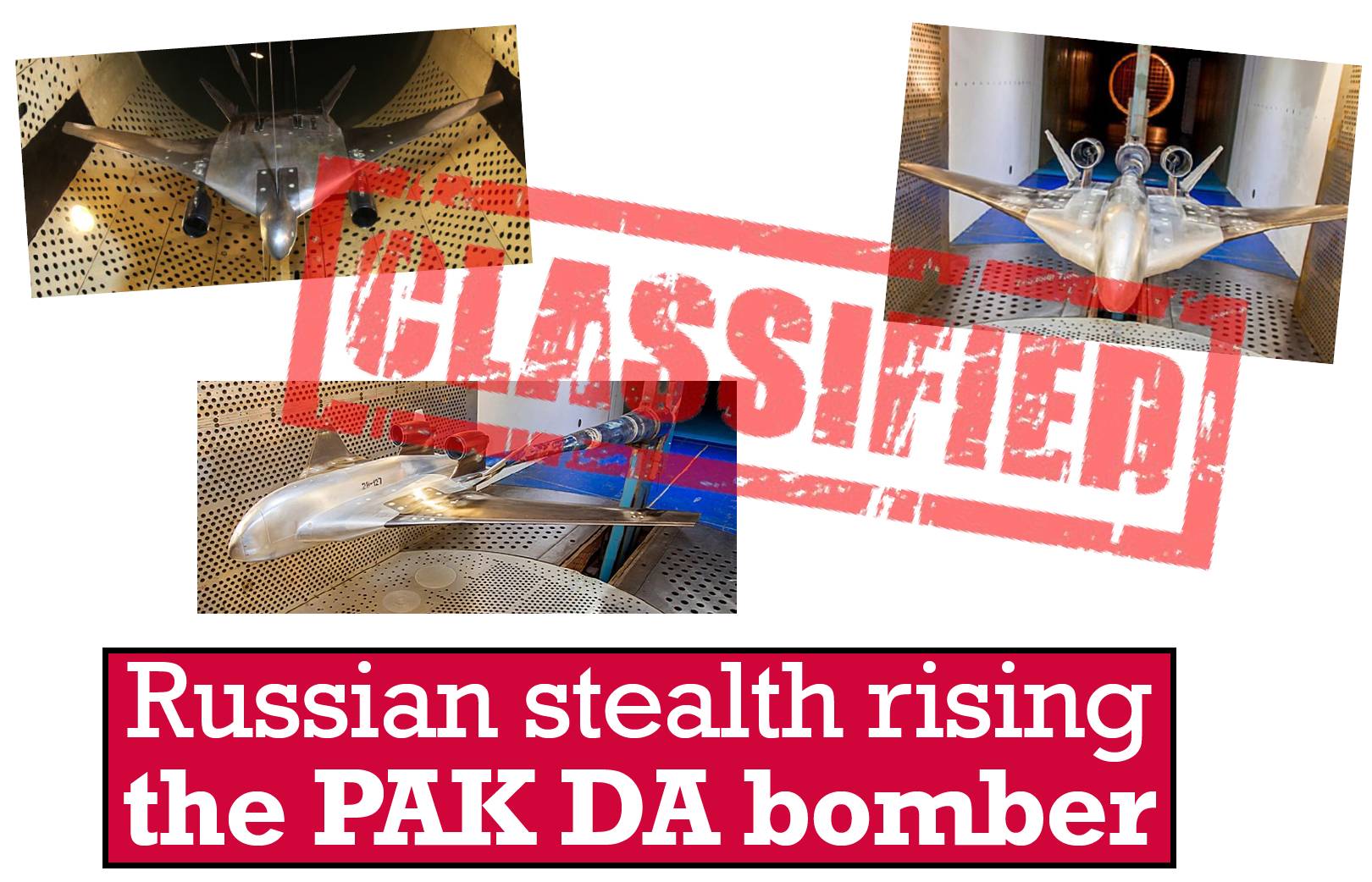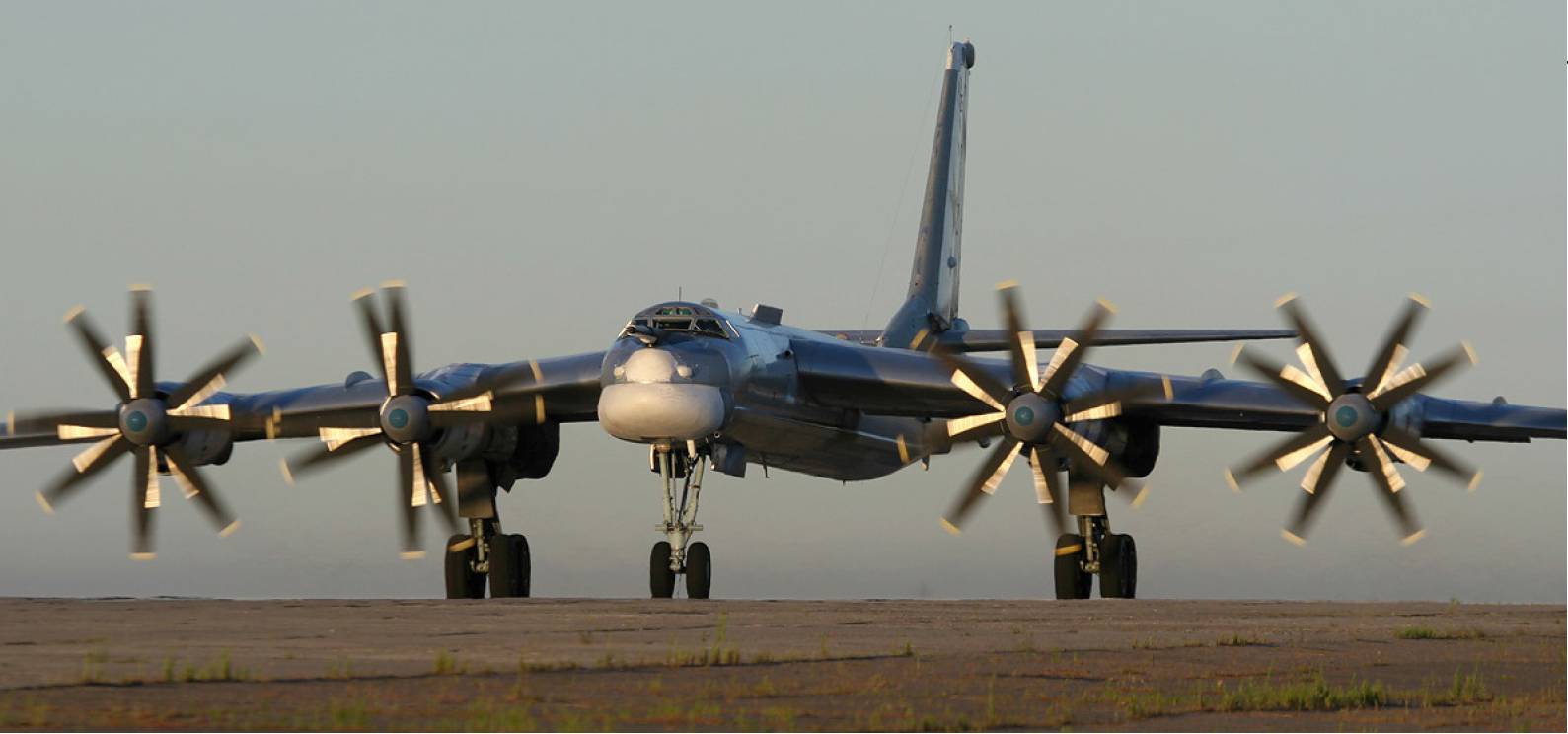DEFENCE Russia’s PAK DA bomber
 TsAGI wind-tunnel models of its civil BWB projects. The true configuration is still unknown. All above images from TsAGI
TsAGI wind-tunnel models of its civil BWB projects. The true configuration is still unknown. All above images from TsAGI
This year saw the first airframe components and construction started on Russia’s new strategic bomber – the PAK DA. EUGENE GERDEN provides an update on the delayed project.
Work on Russia’s new modern bomber, the PAK DA (promising long-range aviation complex) programme is entering its final stage. The Russian TASS news agency, which cited sources from the country’s military-industrial complex, says that Russia has begun the construction of the first prototype of the aircraft at the facilities of the United Aircraft Corporation. The construction works began shortly after the completion of all the design documentation for the project by Tupolev Corporation, which acts as the main designer of the project.
 Denis Manturov, UAC, Chairman (Russian Govt). Denis Manturov,
current chairman of the UAC since 2015.
Denis Manturov, UAC, Chairman (Russian Govt). Denis Manturov,
current chairman of the UAC since 2015.
The first mention of Russia’s next-generation long-range strategic bomber dates back to the late 1990s. In December 2007, the Tupolev Design Bureau received the first set of technical and tactical requirements for a new strategic bomber, while financing of the programme began in 2008.
According to initial plans, the PAK DA was to be heavily based on the supersonic Tupolev Tu-160 but these plans were later revised. On 3 September 2009, the Russian Defence Ministry awarded Tupolev Design Bureau a three-year R&D contract to undertake studies for a new long-range bomber.
In August 2013, the commander of the Russian Air Force, Lieutenant General Viktor Bondarev, said that, like its American counterpart (B-2 Spirit), the bomber would be subsonic. However, it will be able to carry more missiles and bombs than the Tu-160 long-range bomber. According to initial state plans, the first flight of the PAK DA should have been completed in 2015-2017, while the beginning of its serial production was scheduled for 2023-2025. However, these plans were revised as the Russian Government decided to extend the service life of its three strategic missile bombers. Yury Borisov, Russia’s Deputy Prime Minister (and a former Deputy Minister of Defence) said the new PAK DA will make its first flight in 2025-2026, while the beginning of serial production is scheduled for 2028-2029. He stressed that the new aircraft will be able to use any airfields for its take-off and landing. The flight tests of PAK DA will be conducted at the Zhukovsky flight test and aviation base.
Viktor Bondarev, the Chairman of the Committee on Defence and Security of the Russian Council of Federation, the upper house of the Russian Parliament, said the new PAK DA could become the most modern long-range bomber in the Russian Air Force.
According to experts, strategic bombers have always been the most complex type of combat aircraft, in the Russian Air Force, the US and in other countries. This is mainly due to the time, effort and spending associated with the design of this type of aircraft and the conducting of flight tests. Bondarev added that the new aircraft will be a synthesis of all the best features of the existing bombers in Russia, such as the Tu-22M3, Tu-160 and Tu-95MS. In general, the new bomber will be a completely new machine, which was designed literally from scratch and has no analogues in the Russian and Soviet Air Forces.
 Tu-95, Tu-22, Tu-22M, Tu-160 bombers at Poltava Museum of
Long-Range and Strategic Aviation. TsAGI
Tu-95, Tu-22, Tu-22M, Tu-160 bombers at Poltava Museum of
Long-Range and Strategic Aviation. TsAGI
As the majority of details about the project is classified, only a few details about the aircraft and its engines have recently become public. Some details were revealed by the PJSC ‘Kuznetsov’ public procurement website, according to which the main and backup electronic systems of the engine will ensure a flight duration of up to 30 hours. At the same time, fuel supply and hydromechanical control systems will operate at near-zero and negative overloads up to 2-7G and at temperatures from –60 to +50ºC. The engine’s minimum service life will be 12 years with the possibility of extending up to 21 years. The engine must be resistant to the damaging effects of nuclear weapons, while its power plant will have a thrust of 23 tons.
Tests of the new engine will be conducted on similar basis to the heavy military transport aircraft IL-76 and will begin in late 2020. They are expected to be completed by the end of 2021.
So far, about RUB8bn ($150m) has been allocated for the development of the new engine that will be produced by Samara, although the total volume of investment in the project has not currently been disclosed.
According to preliminary information, production of the aircraft will be carried out by the Gorbunov Kazan Production Association. Planned production volumes of the new bomber are currently not disclosed.
With regards to technical parameters, the new PAK DA will be based on a ‘flying wing’ design with the maximum use of ‘stealth’ technologies. Its invisibility will be ensured by a special radarabsorbing covering – using Russian know-how - and the maximum use of composite materials.
It will be equipped with the most modern means of electronic warfare, that will be capable of suppressing the electronics of enemy aircraft and homing systems for anti-aircraft missiles and airto-air missiles. All missile and bomb weapons will be placed inside the fuselage and wings, which will complicate its detection by enemy radars.
The aircraft’s systems will most likely be based on an open platform, which will provide the opportunity of quick updates in order to meet new challenges.
Unlike the Tu-160, the new aircraft will be subsonic, which means that its maximum speed will not probably exceed 1,000km/h. That will contribute to its longer flight range and duration of the flight, compared to supersonic models.
With a range of 15,000km, plus the 5,000km range of the Kh-102 cruise missile that will probably be installed on it, the new PAK DA will be capable of hitting ground and naval targets and can be equipped with a nuclear warhead. Its take-off weight will be 145tonnes.
According to designers and analysts, the increased range of the aircraft will provide it with the opportunity of reaching targets using a more complex route that is unpredictable for an enemy and will bypass air defence zones, as well as making it less dependent on tankers.
In addition to the cruise missile, another option may involve the installation of a hypersonic weapon. One of them could even be the air-launched version of the ‘Zircon’ hypersonic missile.
 Tu-160 Blackjack showing off its loadout including Kh-55SM nuclear-armed cruise missiles (rear row) and the more modern Kh-101/102 steathly cruise missiles. The Kh-101 had its combat debut in Syria. Russian MoD
Tu-160 Blackjack showing off its loadout including Kh-55SM nuclear-armed cruise missiles (rear row) and the more modern Kh-101/102 steathly cruise missiles. The Kh-101 had its combat debut in Syria. Russian MoD
According to some Russian analysts in the field of military aviation, one of the main differences of the PAK DA over its US analogues will be its ability to act as a counter space platform. The armament of a PAK DA with hypersonic missiles will provide it with the ability not only to hit ground targets and aircraft carriers but also potential targets in outer space. That will allow the aircraft to destroy both military satellites and strategic missile warheads. The Russians think, therefore, that the main task of the PAK DA will not be related with bombing of enemy territories but rather the interception of space targets.
In the meantime, despite the optimism of designers and the Russian senior military commanders, some analysts remain sceptical regarding the prospects of the new bomber, despite the design of the PAK DA taking into account the experience of the US developing the B-2 Spirit, which became the best strategic bomber in the US military aviation fleet, both in terms of price and quality.
Viktor Kuzovkov, a well-known Russian military analyst and columnist, believes the PAK DA’s capabilities are unlikely to far exceed the capabilities of the American B-2 Spirit, which was officially launched as far back as 1989. Kuzovkov comments: “With a similar shape, subsonic flight speed, comparable range and armament capabilities, thanks to new avionics and armaments, our new bomber will have some advantage over the B-2 Spirit at the first stage. However, it is obvious that the Americans will be able to catch up fairly quickly. Statements which have been made by some of the highest officials at the Russian Ministry of Defence about the complete new origin of the new aircraft are not probably completely justified.”
At the same time, according to Kuzovkov, the construction of the PAK DA in subsonic version could be considered as one of its advantages. Thanks to its subsonic basis, the new aircraft will not face such serious problems which are typical for supersonic aircraft. One of these is the thermal exhaust, which is one of the major weaknesses of supersonic aircraft, particularly during the afterburner operation of its engines. As Kuzovkov adds, the main problem associated with such thermal exhaust is that modern infrared optics at night can detect such a glowing spot at a distance of several hundred kilometers.
In the meantime, other Russian analysts in the field of military aviation also believe that much should be done in order to successfully complete the project of building the most modern Russian bomber. Viktor Murakhovsky, a military expert and editor-in-chief of the Arsenal Otechestva magazine, one of Russia’s leading military papers, says there is a need to consider the design of a completely new engine for the new PAK DA and, according to the expert, such work must begin soon.
 A Russian Tupolev Tu-95MS (28 RED) at Engels Air Force Base, Russia. Small numbers of the PAK DA may see the Tu-95 serve on. Marina Lystseva
A Russian Tupolev Tu-95MS (28 RED) at Engels Air Force Base, Russia. Small numbers of the PAK DA may see the Tu-95 serve on. Marina Lystseva
According to Murakhovsky, it is too early to say whether the new aircraft will be able to completely replace other missile carriers in the Russian Air Forces. Viktor Murakhovsky comments: “The service life of aircraft, such as the Tu-95, is very long. At the same time, in the US, B-52 bombers have also been in service for many years, still flying and being upgraded for decades”.
Russian military analysts believe the PAK DA will be positioned as an extension of the already existing long-range bombers in Russia, many of which are currently undergoing extensive modernisation. This has been recently confirmed by some Russian media, according to which the modernisation of existing Tu-95 and Tu-160 long-range bombers (which were first put into operation during the 1950s and 1980s, respectively) is currently ongoing.
According to Vasily Kashin, a senior researcher at the Higher School of Economics and an expert of the Russian Center for Analysis of Strategies and Technologies, building such an aircraft is an acute need for the Russian Air Forces, taking into account that the existing Russian Tu-95 and Tu-160 bombers are visible to modern air defence systems, which means the Russian Air Forces need a more modern machine with low radar signature.
Vasily Kashin observes “This will seriously expand our combat capabilities and give a certain advantage. It will be very expensive and difficult to design this type of aircraft. But Russia has time for that. Long-range combat aviation is not as intensively used as civil aviation. In this regard, the service life is much longer. In general, Russian long-range aviation is still younger than the American one.”
The new aircraft will not probably be available for exports, even to Russia’s strategic allies at least at the initial stage. However, there is a possibility that such a decision may be revised later.
It is planned, during the second stage the Russian government, together with a domestic design engineering bureau, may consider the construction of a civil version of the aircraft. Andrei Krasnoperov, a pilot instructor and a major of the Russian Air Force said it would be reasonable to think about the civil version of the aircraft. Krasnoperov says: “The wing can accommodate a lot of passengers and it does not require major changes in design.”